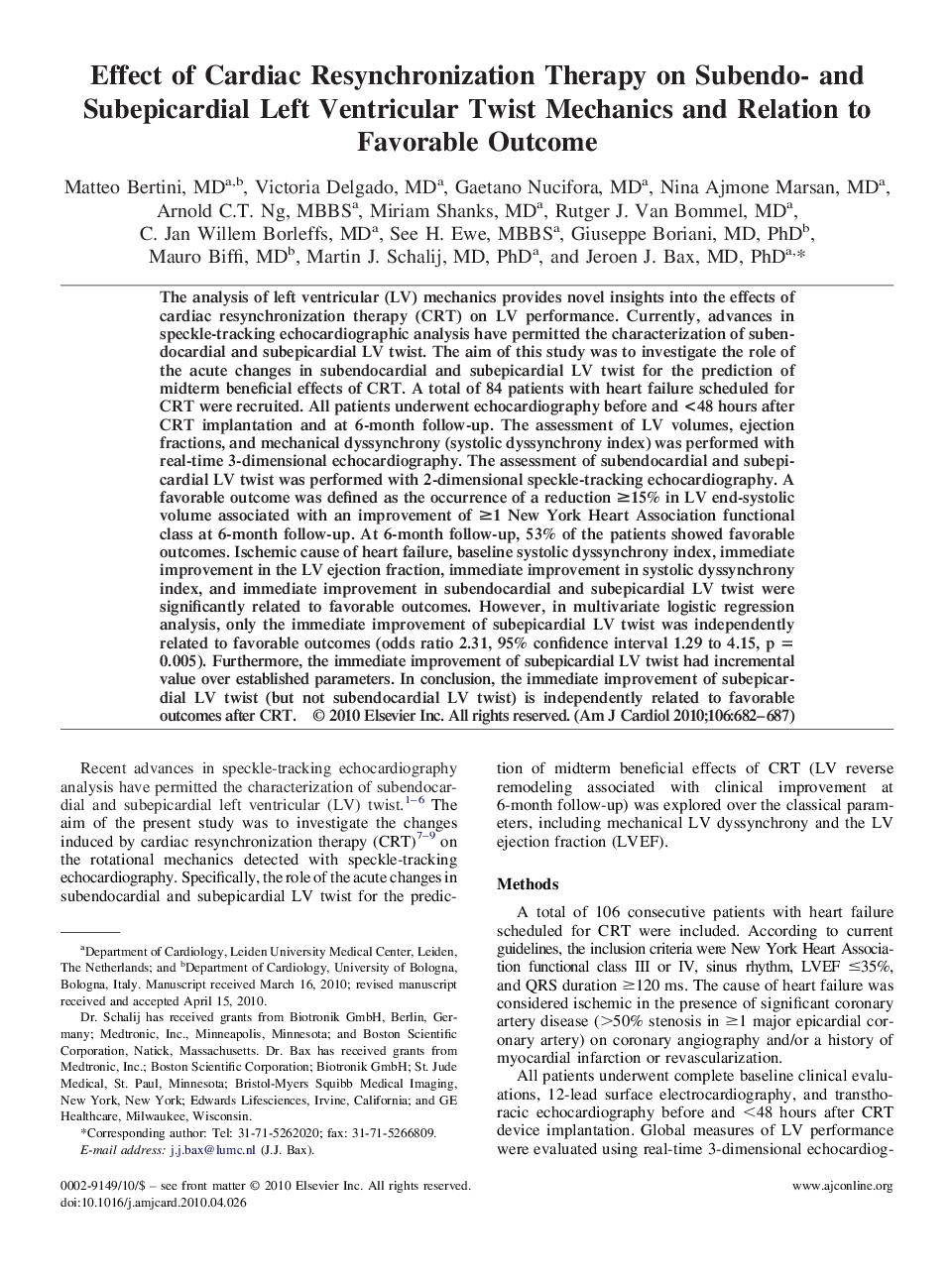| Article ID | Journal | Published Year | Pages | File Type |
|---|---|---|---|---|
| 2857138 | The American Journal of Cardiology | 2010 | 6 Pages |
The analysis of left ventricular (LV) mechanics provides novel insights into the effects of cardiac resynchronization therapy (CRT) on LV performance. Currently, advances in speckle-tracking echocardiographic analysis have permitted the characterization of subendocardial and subepicardial LV twist. The aim of this study was to investigate the role of the acute changes in subendocardial and subepicardial LV twist for the prediction of midterm beneficial effects of CRT. A total of 84 patients with heart failure scheduled for CRT were recruited. All patients underwent echocardiography before and <48 hours after CRT implantation and at 6-month follow-up. The assessment of LV volumes, ejection fractions, and mechanical dyssynchrony (systolic dyssynchrony index) was performed with real-time 3-dimensional echocardiography. The assessment of subendocardial and subepicardial LV twist was performed with 2-dimensional speckle-tracking echocardiography. A favorable outcome was defined as the occurrence of a reduction ≥15% in LV end-systolic volume associated with an improvement of ≥1 New York Heart Association functional class at 6-month follow-up. At 6-month follow-up, 53% of the patients showed favorable outcomes. Ischemic cause of heart failure, baseline systolic dyssynchrony index, immediate improvement in the LV ejection fraction, immediate improvement in systolic dyssynchrony index, and immediate improvement in subendocardial and subepicardial LV twist were significantly related to favorable outcomes. However, in multivariate logistic regression analysis, only the immediate improvement of subepicardial LV twist was independently related to favorable outcomes (odds ratio 2.31, 95% confidence interval 1.29 to 4.15, p = 0.005). Furthermore, the immediate improvement of subepicardial LV twist had incremental value over established parameters. In conclusion, the immediate improvement of subepicardial LV twist (but not subendocardial LV twist) is independently related to favorable outcomes after CRT.
